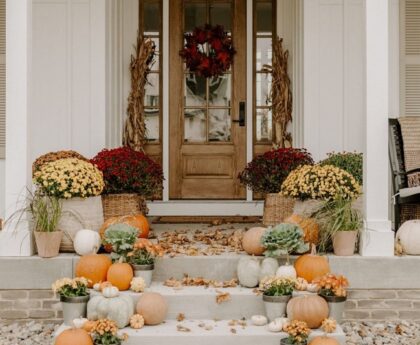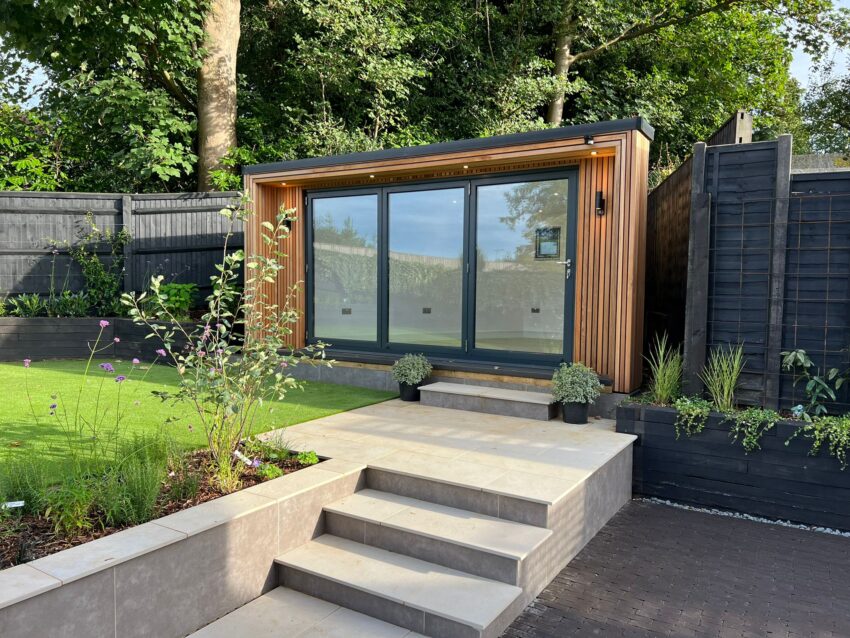When it comes to creating a living space that reflects your style and personality, interior design plays a pivotal role. A well-designed interior not only enhances the aesthetics of your home but also improves functionality and comfort. Whether you’re starting from scratch or looking to give your existing space a makeover, understanding the fundamental principles of interior design is essential. In this article, we’ll explore seven key principles that can help you transform your home into a harmonious and inviting haven.
Balance: Striking the Right Symmetry
Balance in interior design is all about achieving equilibrium between different elements in a room. There are two types of balance: symmetrical and asymmetrical. Symmetrical balance involves mirroring elements on either side of a central point, creating a sense of order and formality. On the other hand, asymmetrical balance is about distributing visual weight unevenly, resulting in a more dynamic and relaxed atmosphere. For instance, if you have a large, heavy piece of furniture on one side of the room, you can balance it with multiple smaller objects on the other side.
Harmony: Creating a Cohesive Look
Harmony in interior design is about ensuring that all elements in a space work together cohesively. This means selecting a consistent color palette, style, and theme for your home. Whether you prefer a modern, minimalist look or a cozy, rustic feel, maintaining harmony throughout your space is crucial. Using a color wheel can help you choose complementary colors that evoke the mood you desire. Additionally, consider the scale and proportion of furniture and décor items to maintain a harmonious visual flow.
Contrast: Adding Visual Interest
Contrast is the spice of interior design. It involves introducing elements that stand out from the rest of the room, creating visual interest. For instance, you can use contrasting colors, textures, or patterns to draw attention to specific areas. A white room with bold, colorful artwork, or a sleek, black accent wall in an otherwise light-colored room, can be excellent examples of using contrast effectively. However, it’s essential to strike a balance so that the contrast doesn’t overwhelm the overall design.
Proportion and Scale: Getting the Size Right
Proportion and scale are vital aspects of interior design, as they affect the functionality and visual appeal of a space. Choosing furniture that fits the size of your room is crucial. Oversized furniture can make a small room feel cramped, while tiny furniture can get lost in a large space. Pay attention to the height, width, and depth of your furniture pieces to ensure they are proportionate to the room. It’s also essential to consider the scale of decorative elements like lighting fixtures, artwork, and accessories to maintain visual harmony.
Rhythm: Establishing a Flow
Creating rhythm in interior design involves guiding the eye around the room in a pleasing and predictable way. You can achieve this through the repetition of design elements, such as colors, patterns, or shapes. For example, using the same color in various parts of the room or repeating a particular pattern in fabrics or accessories can establish a sense of rhythm. This repetition helps create a cohesive and organized look that enhances the overall design.
Emphasis: Focal Points that Captivate
Every well-designed space needs a focal point that immediately grabs attention. It could be a striking piece of furniture, a captivating piece of artwork, or a unique architectural feature. The focal point becomes the centerpiece of the room, drawing people in and anchoring the design. To create a compelling emphasis, choose a focal point that aligns with your overall design theme and style.
Unity: Bringing It All Together
Unity in interior design is the culmination of all the principles mentioned above. It’s about ensuring that all the elements in your space work together seamlessly to create a cohesive and harmonious environment. To achieve unity, revisit your color palette, style choices, and the placement of furniture and décor items. Make adjustments as needed to maintain a unified look that reflects your personal taste and the function of the space.
Conclusion
Interior design is a dynamic and creative field that allows you to express your personality and enhance your living spaces. By understanding and applying the seven principles of balance, harmony, contrast, proportion and scale, rhythm, emphasis, and unity, you can transform your home into a place of comfort and beauty. Remember that interior design is a journey, and it’s okay to experiment and evolve your style over time.
FAQs
What are some popular interior design styles to consider for my home?
There are several popular interior design styles to explore, including contemporary, traditional, minimalist, bohemian, industrial, and coastal. Each style has its unique characteristics and can be adapted to suit your preferences.
How can I make a small room appear larger through interior design?
To make a small room appear larger, use light colors, mirrors to reflect light, and multi-functional furniture. Minimize clutter and choose furniture that doesn’t overwhelm the space.
What are some budget-friendly ways to enhance my home’s interior design?
You can enhance your home’s interior design on a budget by repurposing existing furniture, DIY projects, thrift store finds, and using affordable accessories like throw pillows and curtains.
How can I incorporate sustainable and eco-friendly elements into my interior design?
To make your interior design more sustainable, consider using recycled or upcycled materials, choosing energy-efficient appliances, and incorporating indoor plants to improve air quality.
What are some tips for decorating a child’s room with a balance of style and functionality?
When decorating a child’s room, opt for durable furniture, storage solutions, and a color palette that can grow with your child. Incorporate playful elements and personal touches to make the space unique and functional.







